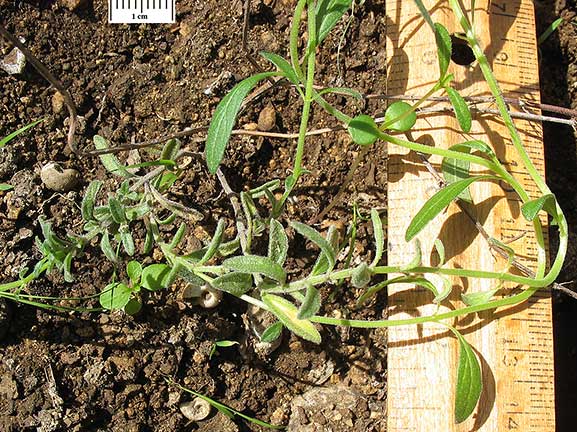
|
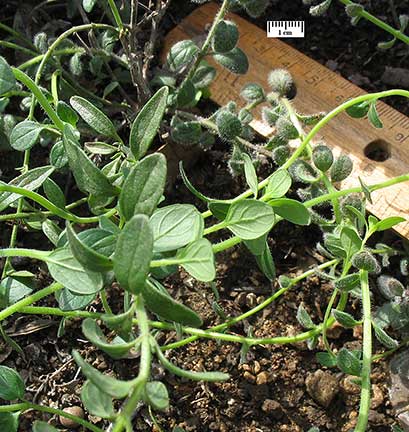
|
|
|---|---|---|
| H, drummondii | H. reverchonii var. serpyllifolia | |

|

|
|
|---|---|---|
| H, drummondii | H. reverchonii var. serpyllifolia | |

On December 2 several plants with well established winter leafs, H. drummondii and H. reverchonii var. serpyllifolia, were transplanted into pots in town to permit observation of their development. With an impending hard frost I decided to move these into my greenhouse, also in part motivated by a squirrel digging in my pots. [Potted plants in our much colder hill country place did not suffer from cold, and squirrels were not a threat.] With abundant moisture and somewhat weaker sunlight, by late February the greenhouse plants had grown larger and lanky, with long internodes in the new growth — not matched, of course, by either natural populations or those in pots outdoors (which did not differ from plants in the wild).
Of interest is that the two taxa (shown above) remain quite distinct in both the winter leafs and the larger new growth leafs. On February 20 one fully developed large leaf and one winter leaf were collected from each and imaged. The length width ratios for the large leafs were HEDR 1:4.6 and HERES 1:2.2; for winter leafs HEDR 1:2.5 and HERES 1:1.6.
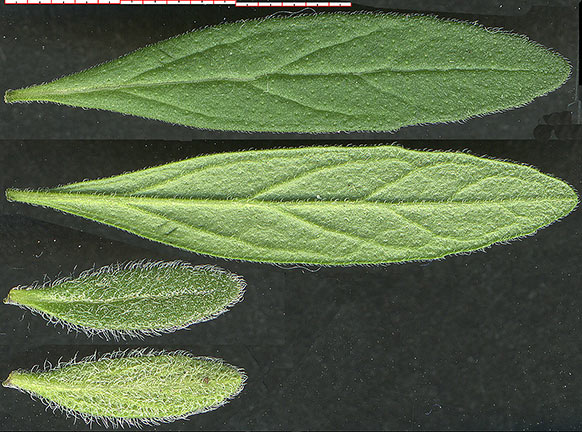
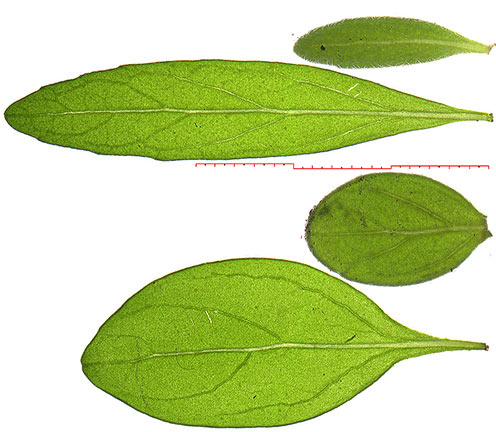
Other differences noted for the two taxa were:
| H. drummondii | H.r. var. serpyllifolia | |
|---|---|---|
| longest hairs | 0.45—0.55 mm | 0.7—0.95 mm. |
| hair density per sq. mm | c. 15 | c. 10 |
| orientation: leaf | curved toward apex | spreading |
| orientation: stem | curved downward |
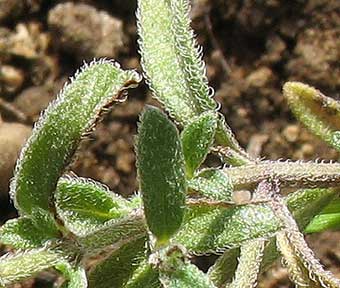 |
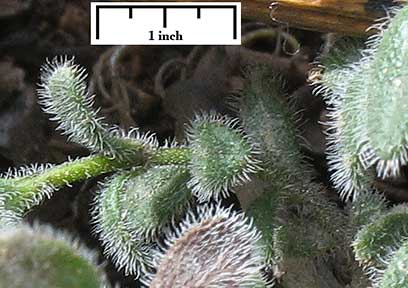
|
|---|
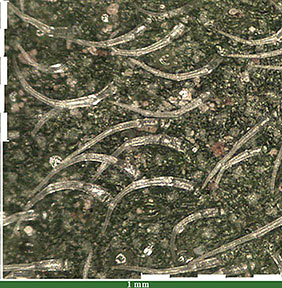 |
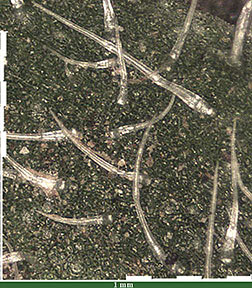
|
|---|---|
| H. drummondii | H.r. var. serpyllifolia |
| Click on image for large version. | |
| H. drummondii | H.r. var. serpyllifolia | |||
|---|---|---|---|---|
| winter | large | winter | large | |
| upper surface | 33 | 21 | c. 1 | < 1 |
| lower surface | 31 | 21 | < 1 | 0 |
2 mm2 area of upper leaf surface.
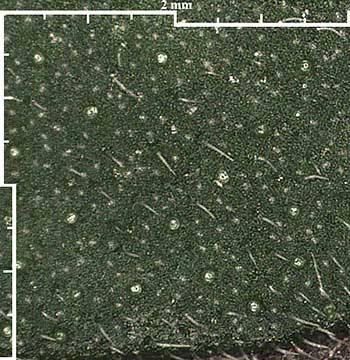 |
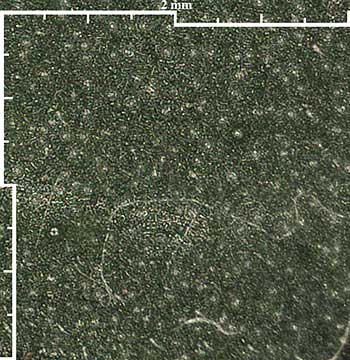
|
|---|---|
| H. drummondii (20 glands visible) | H.r. var. serpyllifolia (2 glands visible) |